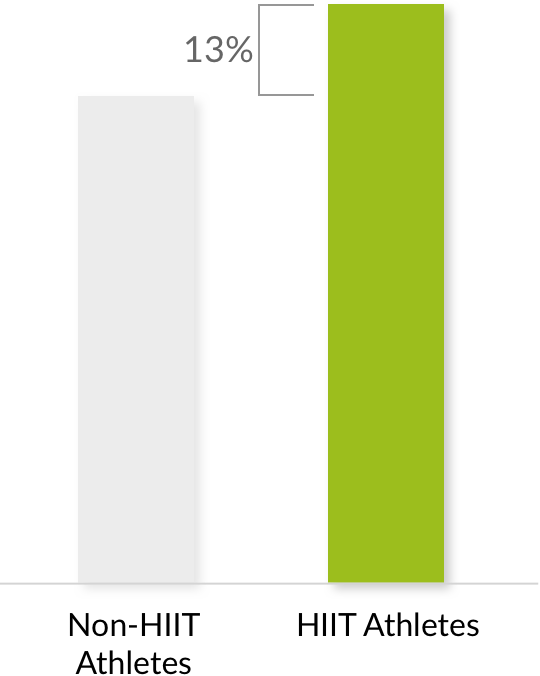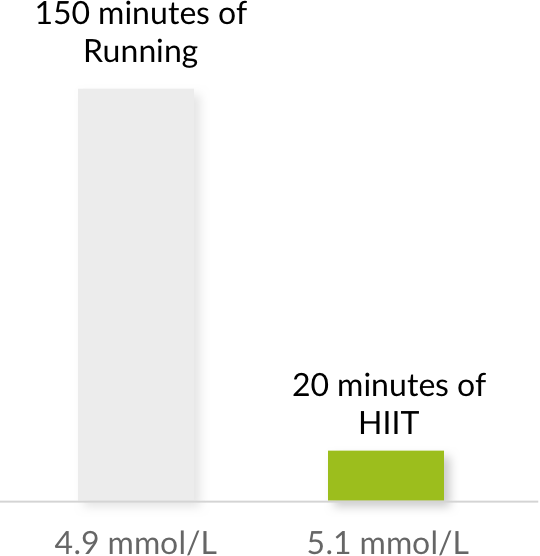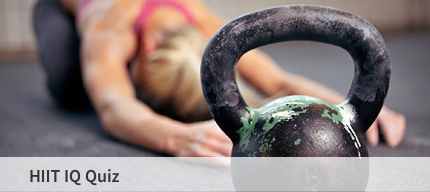
 High Intensity Athletes & All-Cause Mortality
High Intensity Athletes & All-Cause Mortality
According to a 2009 Study in the International Journal of Sports Medicine, men who did high-intensity exercise have a 35% lower risk of all-cause mortality. For women the risk reduction is 44%.
This meta-analysis study analyzed all-cause mortality with special reference to intensity categories. The criteria for a study to be included required 3 or 4 different intensities. Only prospective cohort studies on physical leisure activity were included with a study duration of at least four years. Studies were selected only when the following data were reported: number of subjects, sex, age, duration of study, kind of exercise, intensity (MET) with two or more activity categories. 38 studies made the final cut. The statistical analysis models used in the publications were either proportional hazard models or logistic regression models. In all the studies eligible for meta-analysis either age-adjusted, multivariate-adjusted or both types of relative risk estimates with corresponding confidence intervals were reported.
H. L ö llgen et al, Int J Sports Med 2009

High Intensity Athletes & All-Cause Mortality in Men
According to a 2009 Study in the International Journal of Sports Medicine, men who did high-intensity exercise have a 35% lower risk of all-cause mortality. For women the risk reduction is 44%.
This meta-analysis study analyzed all-cause mortality with special reference to intensity categories. The criteria for a study to be included required 3 or 4 different intensities. Only prospective cohort studies on physical leisure activity were included with a study duration of at least four years. Studies were selected only when the following data were reported: number of subjects, sex, age, duration of study, kind of exercise, intensity (MET) with two or more activity categories. 38 studies made the final cut. The statistical analysis models used in the publications were either proportional hazard models or logistic regression models. In all the studies eligible for meta-analysis either age-adjusted, multivariate-adjusted or both types of relative risk estimates with corresponding confidence intervals were reported.
H. L ö llgen et al, Int J Sports Med 2009
 High Intensity Athletes & VO2 Max
High Intensity Athletes & VO2 Max
According to a 2007 study in the Journal of Applied Physiology, 7 sessions with 10 x 4 min intervals of HIIT improved VO2 max by 13%.
The aim of the study was to examine the effects of seven high-intensity aerobic interval training (HIIT) sessions over 2 weeks on skeletal muscle fuel content, mitochondrial enzyme activities, fatty acid transport proteins, peak O2 consumption (VO2 peak), and whole body metabolic, hormonal, and cardiovascular responses to exercise.
Jason L. Talanian et al, J Appl Physiol 102: 1439–1447, 2007. (doi:10.1152/japplphysiol.01098.2006.)

High Intensity Athletes & VO2 Max
 High Intensity Athletes & Heart Disease
High Intensity Athletes & Heart Disease
According to a 2006 study in the European Journal of Cardiovascular Prevention and Rehabilitation, a single weekly bout of exercise of high intensity reduces the risk of cardiovascular death by 39% in men and 51% in women.
The observation that exercise training reduces cardiovascular mortality is robust and consistent, but the amount and intensity of exercise that is required for risk reduction is not yet resolved. The study focused on the association between the amount and intensity of exercise and cardiovascular mortality in 27,143 men and 28,929 women with no known cardiovascular disease at the beginning of follow-up between 1984 and 1986. After 16 years of follow-up, 2946 men (10.8%) and 2486 women (8.6%) had died from ischaemic heart disease or stroke. A single weekly bout of exercise of high intensity reduced the risk of cardiovascular death, both in men and women, compared with those who reported no activity. There was no additional benefit from increasing the duration or the number of exercise sessions per week. The risk reduction related to exercise increased with increasing age in men, but not in women. These results challenge the current recommendation that expenditure of at least 1000 kcal per week is required to achieve exercise-induced protection against premature cardiovascular mortality.
Wisloff U, Nilsen et al. Eur. J. Cardiovasc. Prev. Rehabil. 2006; 13:798Y804

High Intensity Athletes & Cardiovascular Death in Men
According to a 2006 study in the European Journal of Cardiovascular Prevention and Rehabilitation, a single weekly bout of exercise of high intensity reduces the risk of cardiovascular death by 39% in men and 51% in women.
The observation that exercise training reduces cardiovascular mortality is robust and consistent, but the amount and intensity of exercise that is required for risk reduction is not yet resolved. The study focused on the association between the amount and intensity of exercise and cardiovascular mortality in 27,143 men and 28,929 women with no known cardiovascular disease at the beginning of follow-up between 1984 and 1986. After 16 years of follow-up, 2946 men (10.8%) and 2486 women (8.6%) had died from ischaemic heart disease or stroke. A single weekly bout of exercise of high intensity reduced the risk of cardiovascular death, both in men and women, compared with those who reported no activity. There was no additional benefit from increasing the duration or the number of exercise sessions per week. The risk reduction related to exercise increased with increasing age in men, but not in women. These results challenge the current recommendation that expenditure of at least 1000 kcal per week is required to achieve exercise-induced protection against premature cardiovascular mortality.
Wisloff U, Nilsen et al. Eur. J. Cardiovasc. Prev. Rehabil. 2006; 13:798Y804
 High Intensity Athletes & Blood Glucose
High Intensity Athletes & Blood Glucose
According to a 2010 study in the Journal of Medicine and Science in Sports and Exercise, 20 minutes of HIIT running results in a significant blood glucose reduction when tested 2 hours after eating, comparable to 150 minutes of prolonged running.
All participants were males from 20-45, nonsmokers without metabolic or CVD diseases. Participants were divided into 4 groups: high intensity intervals, strength training, running, no added exercise. All training groups met 3 times a week for 12 weeks. The study investigated various health effects of brief but very intense exercise training, and the marked improvements in cardiovascular fitness, glucose tolerance, and exercise endurance as well as the lowering of systolic blood pressure which emphasized the potential benefits of high-intensity training and its ability to improve certain physiological health parameters.
Lars Nybo et al; J. Med and Sci in Sports and Exercise, 2010 Oct;42(10):1951-8. (doi: 10.1249/MSS.0b013e3181d99203.)

High Intensity Athletes & Blood Glucose


We are a licensed life insurance agent* in all 50 states.
View our licenses
We negotiated lower rates on life insurance using science and data.
View our research
By high intensity athletes for high intensity athletes. Our team is comprised of health conscious people who overcame their own health challenges with healthy habits, exercise, and nutrition.
Meet our team














